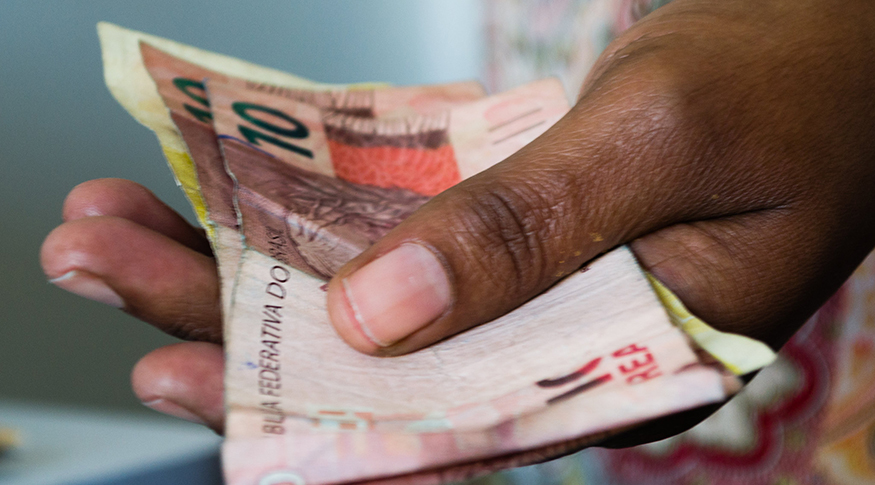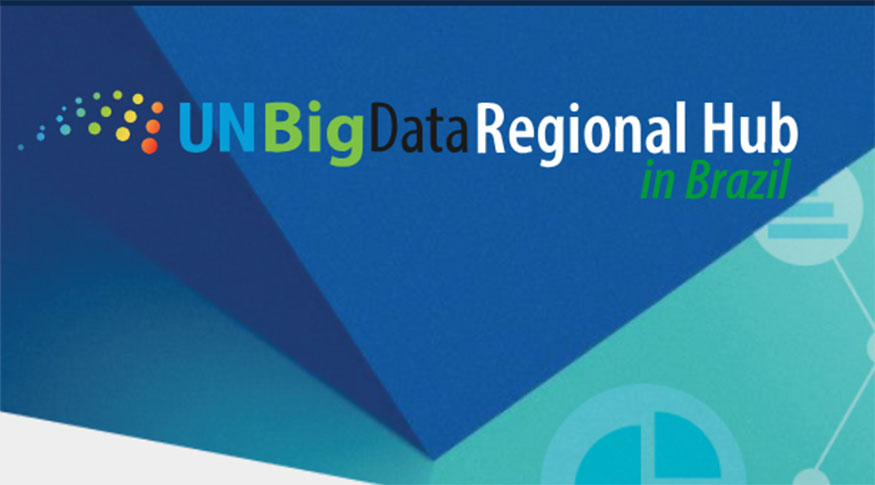Continuous PNAD
In 2022, labor market and "Auxílio Brasil" cash transfer program allow income recovery
May 11, 2023 10h00 AM | Last Updated: May 15, 2023 07h32 PM
Highlights
- In 2022, the average real monthly household income per capita reached R$1,586, up 6.9% compared to 2021, when it recorded the lowest value (R$1,484) in the time series started in 2012. As a result, the real monthly household income per capita rose 7.7% compared to 2021, reaching R$339.6 billion.
- The Northeast Region continues with the lowest average monthly household income per capita (R$1,011), while the South has the highest (R$1,927).
- The percentage of persons with income in the country's population rose from 59.8% in 2021 to 62.6% in 2022, the highest proportion of the time series, started in 2012.
- The average real income from all sources grew 2.0% compared to 2021 and reached R$ 2,533, the second lowest value in the series, since 2012. In turn, income from all jobs (R$ 2,659) fell 2.1% , while income from other sources (R$ 1,657) increased by 12.1%.
- From 2021 to 2022, the real monthly wage bill from all jobs rose 6.6%, going to R$ 253.1 billion. It was a recovery after losses of 5.6% in 2020 and 3.2% in 2021, during the pandemic.
- Between 2021 and 2022, the proportion of households with some beneficiary of other social programs, which includes emergency aid, dropped significantly (from 15.4% to 1.5%), while there was increase (from 8.6% to 16.9%) in the proportion of households with a beneficiary of the Auxílio Brasil/Bolsa Família. These oscillations may be linked to migrations between benefits (towards the one wuth the highest cash pay) or to possible difficulties for informants to correctly identify which benefit they received.
- In 2022, the average income of the 1% of the population earning more money (monthly household income per capita of RS17,447) was 32.5 times greater than the average income of the 50% earning less money (R$537). In 2021, this ratio was 38.4 times.
- Income inequality declined in the population as a whole and also in the employed population: the Gini Index for household income per capita fell from 0.544 to 0.518 and the Gini Index for income from all jobs fell from 0.499 to 0.486, both were the lowest figures in the series.
- The average monthly income of the “Rental and leasing” category fell from RS1,989 in 2021 to RS1,755 in 2022, the lowest value in the time series.

The average monthly household income per capita was R$ 1,586 in 2022, up 6.9% against 2021, when it had reached the lowest value of the time series (R$ 1,484), after two years of decrease during the COVID-19 pandemic.
In 2022, real monthly household wage bill per capita increased 7.7% against 2021, reaching R$ 339.6 billion in 2022. The Northeast Region remains with the lowest average monthly household income per capita (R$1,011), while the South keeps the highest one (R$ 1,927). Data are from the Continuous National Household Sample Survey (PNAD): Income from all sources 2022, released today by the IBGE.
The average real monthly income of the resident population with income from all sources was R$ 2,533, 2.0% higher than in 2021 and 2.6% lower than the index at the beginning of the series, in 2012. R$2,659, down 2.1%. Income from other sources grew 12.1%, reaching R$1,657 in 2022, with the item retirement and pension maintaining the highest average in 2022 (R$2,161) and highlight for the item other income, rising from R$562 to R$814 (up 44.8%), reaching the highest value in the series.
The average monthly income in the Rental and leasing category fell from R$1,989 in 2021 to R$1,755 in 2022, the lowest value in the series. This trend was followed by the Northeast, South and Southeast Regions, the latter showing the biggest drop, from R$ 2,261 to R$ 1,815.
“This was the first time that this category was below R$2,000 in the Southeast Region, in a big drop. A possible explanation may be inflation. One can see this movement in other categories as well. Some items are not adjusted according to inflation, which causes this corrosion”, says Alessandra Brito, research analyst.
The percentage of persons with some type of income in the country's population rose from 59.8% in 2021 to 62.6% in 2022. There was growth in all Regions and the South had the highest estimate (67.0%), while the North Region had the lowest (55.9%).
The percentage of persons with income from all jobs also grew, going from 41.1% in 2021 to 44.5% in 2022, which shows the increase in employment in the country. On the other hand, in the same period, the percentage of persons with income from “Other sources” dropped from 24.8% to 24.4%. Within the “Other sources” segment, 13.3% (28.5 million persons) of the resident population received “Retirement and Pension” in 2022, while 8.9% received “Other income”, 2.0% received “Alimony, donation or non-resident allowance” and 1.7% “Rental and leasing”.
Considering the per capita household income of the population, the share of income from “All jobs” was 74.5% and that from “Other Sources”, 25.5%. Within the “Other sources” segment, 18.1% went to “Retirement and Pension”, 1.9% to “Rental and Leasing”, 0.9% to “Alimony, Donation and Non-resident Allowance” and 4.6% for “Other income”.
Proportion of households with beneficiaries of the Auxílio Brasil / Bolsa Família reaches 16.9%
Also in 2021, changes in the policy for granting emergency aid caused the percentage of households with someone receiving Bolsa Família to increase again (8.6%), reducing the proportion of those receiving other social benefits (15.4%) .
In 2022, the interruption of emergency aid payments and the creation of Auxílio Brasil help explain part of the percentage increase in households receiving this cash transfer program (16.9%) and the reduction in the “Other social programs” category to 1.5% . Such wide oscillations may indicate migrations to a more advantageous benefit during the pandemic or result from possible difficulties of the respondents in correctly identifying which benefit they received.
“The category of other social programs, which included Emergency Aid, returned to its historic level of less than 2% in the Survey. In the group under which Bolsa Família was and under which Auxílio Brasil is investigated this year, compared with the pre-pandemic, shows increase of beneficiaries from 14.3% in 2019 to 16.9% in 2022” , explains Mr. Brito.
Gini indexes of income from all sources and from work fall to the lowest values
After growing in 2021 (0.544), the Gini index of the average monthly household income per capita fell in 2022, reaching the mark of 0.518. The higher the Gini, the greater the inequality.
The Northeast maintained the highest Gini index in 2022 (0.517) and the South Region, the lowest (0.458). Between 2021 and 2022, inequality measured by the Gini decreased in all Major Regions, especially in the Northeast (from 0.556 to 0.517) and Southeast (0.533 to 0.505). In this Region and also in the Central-West (0.493), the respective Gini indices reached the lowest values in the time series.
The Gini of the average monthly income from all jobs fell from 0.499 to 0.486, reaching its lowest values, in the average of the country and in almost all Major Regions. According to analyst Alessandra Brito, “the entry of almost 8 million persons into the employed population pushed the average income down, but apparently these persons entered the labor market receiving salaries with similar amounts, which resulted in a less unequal distribution. In addition, the average income of workers without a formal contract and self-employed increased in the period, also contributing to this drop in the inequality index”.
Despite the reduction in the Gini index, inequality remains: in 2022, the average household income per capita of the 1% of the population that earns more money was R$ 17,447. This is equivalent to 32.5 times the average income of the 50% who earn less (R$ 537), a still very large inequality ratio, although, in 2021, it was 38.4 times.
“The sudden drop of this ratio to the lowest level of the time series reflects a little of everything we observed. Many persons returned to the job market, the very poor are receiving aids comparable to the emergency aid in value, and the richest 1% had a small reduction in income”, summarizes Brito.
The survey shows that half of the population with the lowest income received, on average, R$ 537, an increase of 18.0% compared to 2021, when the income of this half of the population reached the lowest value in the time series: R$ 455.
From 2021 to 2022, per capita household income grew across almost all groups, but mostly in the first half. The 1% with the highest income had a small loss (-0.3%).


















